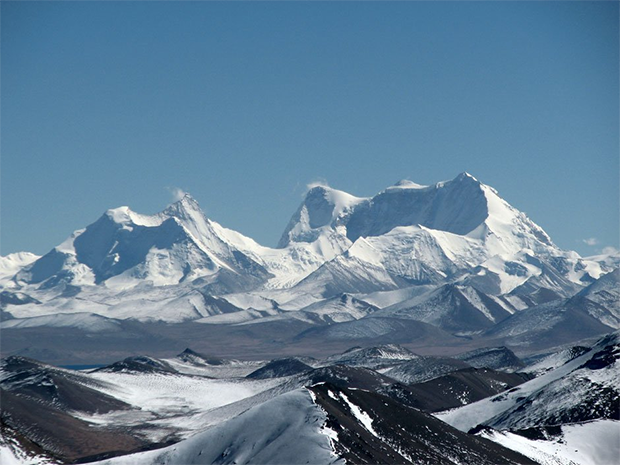|
In this day and age, the travel industry has made it easy for people to
go out the door, grab the next flight and travel the world. New doors
have been opened, enabling us to explore new regions and embark on new
adventures. That being said, there remain many places in the world that
are still left untouched, peaks that are yet to be scaled and oceans
unexplored. One such peak that still remains to be climbed is Pakistan’s
very own Muchu Chhish, one of the highest peaks in The Himalayas. Here
we look at, in descending order, four of the world’s toughest and
highest unclimbed peaks in The Himalayas.
|
|
Angkhar Puensum, Bhutan
Bhutan’s Angkhar Puensum is widely considered the world’s highest
unclimbed mountain at 7,570m. The mountain lies on the border with
China. While a team reached its subsidiary peak in the late 1990’s, the
main peak remains unclimbed. Bhutan has banned any form of
mountaineering on peaks higher than 6,000m out of respect for spiritual
beliefs, the Angkhar Puensum may remained unclimbed. |
|
 |
|
Muchu Chhish, Pakistan
At 7,453m, the Muchu Chhish falls within the borders of Pakistan and is
located in Western Karakoram. An English mountaineer, Pete Thompson,
attempted to summit the highly inaccessible peak in 2014; expecting to
climb a portion of the ascent without ropes. However, due to hard ice,
the area had to be pitched taking the climb longer than anticipated. In
vain, Thompson turned back at 6,000m. Prior to his attempt, a Spanish
team ascended the peak in 1999 which is the only widely-accepted
attempt. |
|

|
|
Mount Kailash, Tibet
Mount Kailash rises to 6,638m and is found in the Kailash Range in
Tibet. Several religions, including Buddhism and Hinduism, consider it
sacred and make annual pilgrimage to the mountain in a holy ritual which
is believed to bring good fortune. Due to its religious importance, the
Chinese government has banned all attempts to climb it. |
|

|
|
Karjiang, Tibet
Karjiang South is the highest peak of the Karjiang, elevated at 7,221m.
Many attempts, albeit unsuccessful, were made to climb the mountain
which is known to be prone to severe weather and a technical climb. The
most recent attempt was made in 2001 by a Dutch group who had to turn
back owing to bad weather conditions. |
|
 |